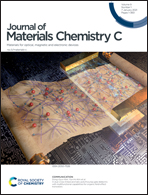Growth of {100}-oriented lead zirconate titanate thin films mediated by a safe solvent†
Abstract
Chemical solution deposition (CSD) is a well-established process for the fabrication of metal oxide functional layers such as piezoelectric lead zirconate titanate (PZT) thin films. The latter exhibit an enhanced electromechanical response in the presence of {100} crystalline orientation with respect to the substrate surface. Lead titanate (PbTiO3) seed layers are commonly used to promote the growth of this orientation on platinized silicon, which otherwise usually affords the {111} orientation. In this work, we present a comparative study of two solvents used for the preparation of PZT and PbTiO3 solutions for CSD, i.e. the popular but highly carcinogenic and teratogenic solvent 2-methoxyethanol and the benign solvent 1-methoxy-2-propanol. In addition to tremendous health and safety benefits, we show that 1-methoxy-2-propanol-derived PbTiO3 seed layers promote the {100} orientation more efficiently than their 2-methoxyethanol-derived counterparts, owing to their nanocrystalline microstructure and strong orientation. This resulted in a noticeable enhancement of the electrical and piezoelectric properties, with Pr = 38 μC cm−2, Ec = 55 kV cm−1, εr = 1300, tan δ = 0.04 and e31,f ≈ 14 C m−2.



 Please wait while we load your content...
Please wait while we load your content...